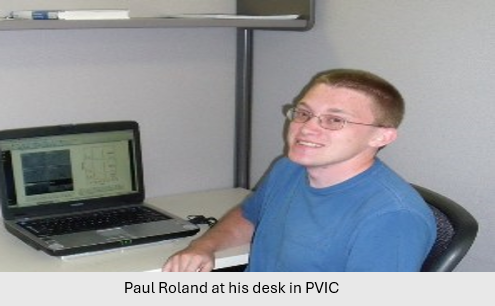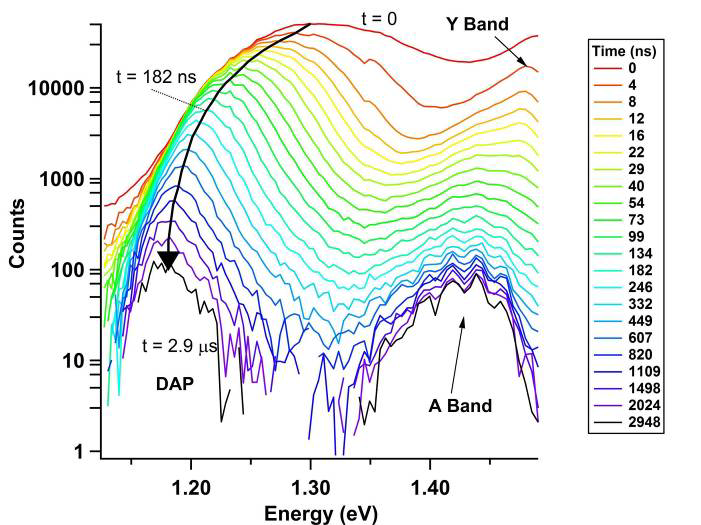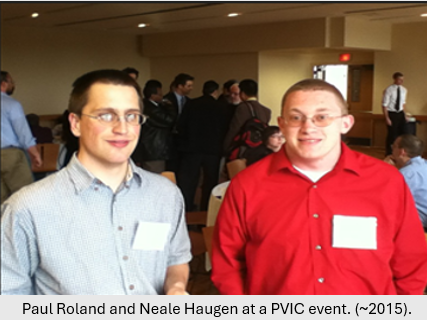PVIC NEWS
PVIC Mourns the Passing of Accomplished Researcher and Alumnus Dr. Paul Roland, Celebrates Legacy of his Contributions to PV Materials Research
It with a heavy heart that we write to inform you that Dr. Paul Roland, a former graduate student with PVIC who received his UToledo Ph.D. degree in 2015, has passed away.
Relatively few of us remaining within PVIC had the great opportunity to overlap with him, and I wanted to share more about him and his accomplishments so that you know about the remarkable things that he did. Paul was professional and courteous, collaborating very effectively with a wide range of faculty and students, both within and external to UToledo including personnel from RIT, NASA-GRC, and BGSU. As a student and researcher, Paul was hugely productive, innovative, and pioneering.
Paul came from Michigan where he received his B.S. in Electrical Engineering from Kettering University in 2009. He joined the Ellingson group, and was assigned to the challenging field of PL and TRPL where he achieved the rare combination of success in both the hands-on operation of the experimental systems, and advanced data analysis.
A review of his thesis is certainly recommended, which describes novel studies of CSS and sputtered CdTe both with and without CdCl2 treatment.

In one wonderful example, he measured TRPL decays at various emission wavelengths, and the reconstructed these to reveal the time-dependent emission spectrum from an as-deposited CSS CdTe thin film sample. Paul’s hard work helped him develop considerable expertise, and to gain recognition for his accomplishments. As one example, during the 2014 PVSC, Paul was one of very few UT researchers receiving an oral presentation in the area of CdTe PV, and this was thanks to the insights he developed during his low-temp PL studies.

Figure 3-8 from Paul’s thesis: Constructed PL spectra (@ 25 K) of low energy transitions from an as-deposited CSS CdTe film.Paul developed considerable expertise in PV materials and device characterization, on a wide range of material systems spanning from quantum-confined nanostructures (colloidal PbS QD and nanosheet thin films and devices, epitaxial III-V QD-based thin films and devices) to conventional and exploratory thin film polycrystalline PV (e.g., CdTe, CdS, CIGS, CZTS, CIS, perovskites). Paul contributed centrally to establishing a rapid-throughput, highly customizable J-V testing methodology, including software and hardware development for multiplexed testing of dot cell arrays, and test systems for unique conditions, such as temperature- and light-intensity-dependent characterization.
Figure 3-8
In addition, Paul has assembled advanced and effective PL and TRPL hardware and software systems, customized based on his skills in LabView for control of excitation and detection wavelengths and measurement parameters. In collaboration with RIT and NASA-GRC, Paul’s role in the PL and TRPL analysis of innovative GaAs nipi and GaAs/InAs QD structures has helped to advance understanding of the role of these architectures in extending IR absorption for possible IBSC functionality.
Paul applied for and was selected to join the AFRL Scholars program during the summer of 2015 at Kirtland Air Force Base. There in Albuquerque, New Mexico, he gained a summer of research experience under the guidance of an AFRL mentor. This helped him to build on his sound foundation for mathematical and logical analysis, and his familiarity with optical and electronic materials.
Ultimately, Paul went on to work with SolAero, a New Mexico-based company focused on multi-junction solar cells for space applications. He ended his career working with Lockheed Martin as a Senior Test Engineer.

Paul is greatly missed by many within PVIC , and beyond.


